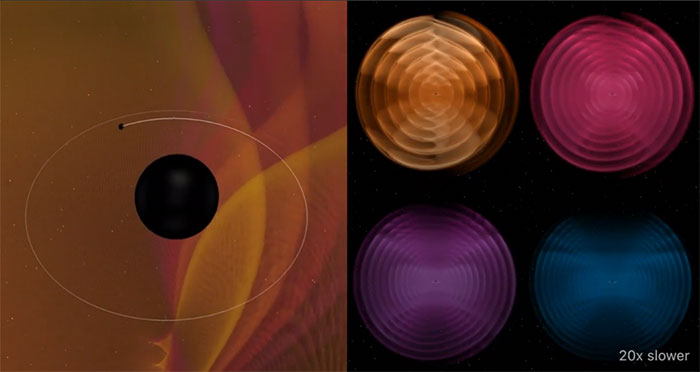Scientists discovered a merger between a black hole and a mysterious object
Astrophysicists discovered a strange radio signal emanating from the merger between the black hole and an unknown object.
A team of researchers announced for the first time the discovery of a radio signal generated by the collision of a black hole with an object larger than the largest neutron star but smaller than the smallest black hole. Although this finding is so complicated that it is difficult for scientists to pinpoint exactly what happens, this signal provides hope for more new observations in the future. The findings also provide insight into the process of a supernova explosion, said Christopher Berry, a gravitational wave research astronomer at Northwestern University and University of Glasgow, who co-authored the study. Berry and his colleagues published their findings on June 23 in the Astrophysical Journal Letters.

The mysterious object has a mass on the difference between the black hole and neutron star.
The team obtained a gravitational wave signal on August 14, 2019. Initial analysis suggests that the collision could have been a black hole merged with a neutron star. It is an event that researchers have always been waiting for because they had only previously discovered mergers between two objects of the same type. But when they conducted more analyzes with the data, they realized that the object that collided with the black hole was even more strange. According to the analysis, the black hole is 23 times more massive than the Sun and the other object is 2.6 times heavier than the Sun.
The mysterious object has a mass on the difference between the black hole and neutron star. It is much smaller than any black hole ever studied but bigger than any known neutron star, making it impossible for researchers to classify it. They did not detect any signal that a neutron star could emit, but could not rule out the possibility that it was a neutron star.
Unlike other collisions of the same type, the pair of objects in the study has a large mass difference. The black hole is about 9 times heavier than the object that collided with it, so it's harder for scientists to look into the details of the event. According to Vicky Kalogera, an astrophysicist at Northwestern University, when mass is disproportionate, black holes can "swallow" smaller objects.
This event is also difficult to study because it happened quite far away. The collision occurred about 800 million light-years from Earth, six times farther away than the merger of a neutron star discovered in August 2017 through gravitational waves. Scientists will need to observe more collisions to draw conclusions.
- Video: Top 5 biggest black holes discovered by NASA in 2017
- Discovered the unknown type of black hole
- Discovering 'super black holes' is 12 times bigger than the Sun.
- Discover the mystery of the most exotic black holes in the universe
- Find the UFOs flying out from the supermassive black hole
- Close up of 3 mysterious holes on the Moon
- Black hole detection
- Scientists have observed 1000 times the material that the Sun has just emerged from a black hole
- Black force - a new force in the universe, becomes even more strange
- No one expected, there were these weird black holes
- Reveal the mysterious black hole on the Martian crater
- Time to turn back inside the black hole
 Van Allen's belt and evidence that the Apollo 11 mission to the Moon was myth
Van Allen's belt and evidence that the Apollo 11 mission to the Moon was myth The levels of civilization in the universe (Kardashev scale)
The levels of civilization in the universe (Kardashev scale) Today Mars, the sun and the Earth are aligned
Today Mars, the sun and the Earth are aligned The Amazon owner announced a secret plan to build a space base for thousands of people
The Amazon owner announced a secret plan to build a space base for thousands of people